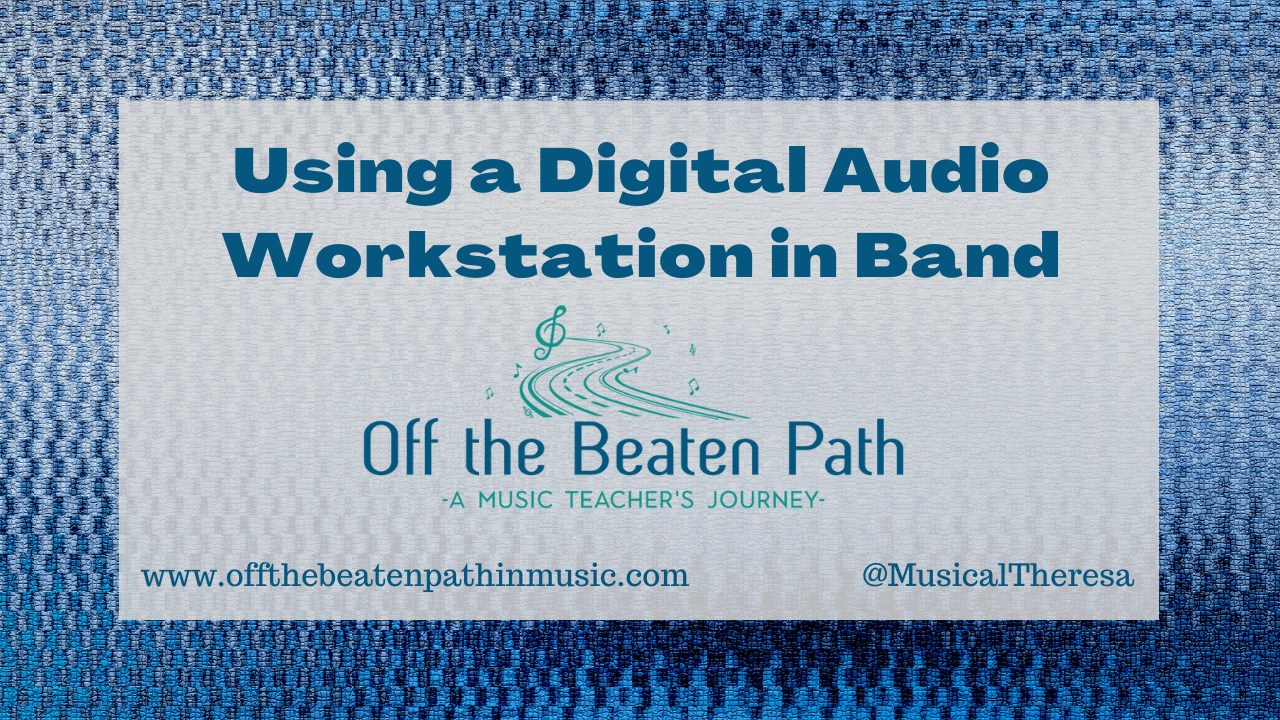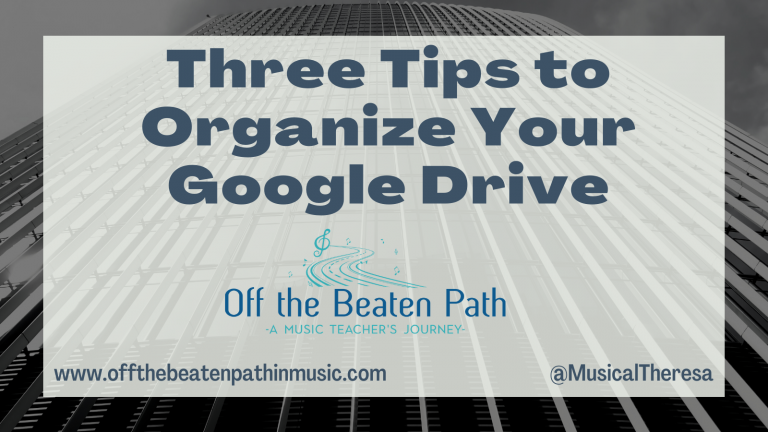Using a Digital Audio Workstation (DAW) in Band
This article was originally published in The Woman Conductor Journal, June 2022 issue.
Prior to the year 2000, a digital audio workstation, known as a DAW, was only found in professional music studios. The DAW was complex and primarily used by those in the music industry. However, in 2004 Apple introduced GarageBand on all of their devices, making it so anyone could create music regardless of their experience level. Since that time, several other companies have released similar tools, making it easy for educators to use a DAW with their students. Many music educators have found that using a DAW in band classes is a rewarding experience for everyone involved.

Features of a DAW
A digital audio workstation is an application you can use to create, record, edit, and produce audio files. Most DAWs, including the ones described here, will have similar features. One they are most known for is the pre-made loops. Loops contain musical patterns that can repeat seamlessly for any amount of time. The loops are available in a variety of styles, and could include drum beats, bass lines, chord progressions, melodic fragments, and more. When creating in a DAW, you can drag loops into the workspace and then organize and layer them as desired.
Besides creating with loops, you can also record sound directly into the DAW. Most devices have a built-in microphone that will work, or there are a variety of external microphones available. After you have recorded, you can edit, mix, and manipulate the sound many ways.
Most DAWs also include MIDI instruments, sometimes called virtual instruments, that you can “play,” record, and edit. While adding these virtual instruments isn’t the same as using real instruments, it can be a great substitute for sounds that otherwise wouldn’t be available.
Once content has been added, you can edit, add effects, mix, and master the various tracks. While some techniques are more complex than others, the DAWs mentioned here are quite user-friendly and very accessible to school-age students.
Using a DAW With Band Students
While a DAW might not be something you use every day during rehearsal, there are several ways you could incorporate it in band classes to encourage student creativity and enhance the musical experience. Here are some suggestions on how you can use a DAW with band students:
- Students can use loops to create a backing track for warm-up exercises or music they are working on. Play the backing track through speakers during rehearsal, or have students use the tracks for personal practice time. Backing tracks act as a great metronome, and make practicing more fun!
- Students can record themselves into a DAW playing a solo or their ensemble music. After recording, they can edit the track, add an accompaniment, or create a remix.
- Students can create a multi-track recording alone or with friends. Each person records one or more tracks into the DAW (duets and other small ensemble pieces work great for this), then edit and mix the tracks together. This is best for students who already have some experience using DAWs.
- Have students create music in a specific style or form using a combination of recorded sounds, loops, and virtual instruments.
Which DAW Should I Use?
There are many DAWs available, but here are four most commonly used with students. With any tech tool, it’s important to know you are using a program that is approved in your school, especially for students under 13 years old. Check with your school technology coordinator prior to using any new tech tools with students.
GarageBand
GarageBand is available on all Apple devices: MacBooks, iPads, and iPhones. While the desktop version differs from the app on a tablet or phone, the program is still quite robust and offers many creation opportunities for musicians. The Apple Teacher Learning Center has resources and tutorials to help educators get started using GarageBand.
Soundtrap
Another popular DAW for the classroom is Soundtrap. What makes Soundtrap unique is the fact that it is a cloud-based platform, accessible from any device with a web browser. This means creators can access Soundtrap anywhere. Soundtrap also has an education platform that serves as a walled garden and allows teachers to interact with students, create assignments, and provide safe, creative experiences. Students can even collaborate on projects! While Soundtrap’s education platform is not free to use, its low price-per-student makes it a very reasonable expense. To learn more about Soundtrap, check out their free Soundtrap Certified Educator courses.
BandLab
BandLab is one of the newer DAWs available. The platform is cloud-based and features an education platform similar to Soundtrap. BandLab also offers an app for iOS and Android devices. BandLab for Education is free for teachers and students, though it requires students under 18 years old to get parental permission before using.



Soundation4Education is another cloud-based digital audio workstation offered through Music First. The educational version of Soundation is also a subscription platform, but it can be bundled with other Music First programs.
For more information about which DAW to use, check out this post by Katie Wardrobe from Midnight Music, Should I Use GarageBand, Soundtrap, or BandLab With My Students? In fact, Katie even has a course for music educators to learn more about these DAWs: GarageBand for Mac, Soundtrap and Bandlab Lesson Plans and Teacher Tips.
The Goal is to Create Music
There are so many ways you could use a DAW with band students. Start by thinking about your musical goals and then brainstorm how incorporating music creation could help enhance those goals. Also consider asking students how they are already using DAWs to create music (many of them are) and how they might enjoy incorporating that into band classes. The opportunity to create music, not just recreate someone else’s music, is something we must provide for all students. Using a DAW can help make that more accessible, more personal, and more relevant to our students.
Looking for more ideas on how to incorporate creativity in your music classes? Check out these blog posts:
- Creating Music With Groove Pizza
- Inspiring Creativity With the Chrome Music Lab
- Four Creativity Activities for the End of the School Year
Empowering Ensembles With Technology
Interested in learning more about how you can incorporate music technology in your teaching? Check out my newest book, Empowering Ensembles With Technology!
This book is a one-stop-shop for music teachers looking to get started, or expand their experiences, with technology in the classroom. Help your students see themselves as musicians, both inside and outside the music room, by empowering them in the ensemble setting. Check it out today: Empowering Ensembles With Technology.






